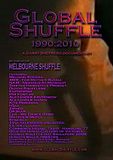And it starts here. Mr Nice is East Africa's by far most popular performer, an R Kelly-type figure touring the world among adoring fans with a supposed 4000 dollar a night fee. In some ways, takeu is his style. He's its most high-profile performer, his albums are called things like "Takeu Style" and "T.A.K.E.U" and most prominently, he named the style - an acronym of the three principal countries in East Africa, TAnzania, KEnya and Uganda.
And indeed, you can feel the presence of all three countries in the music. Some stuff is clearly related to pan-regional trends, like the fascination with ragga, most convincingly realised in Uganda. You can also feel the influence of the last generation of regional styles, like taraab and musiki wa dansi.
But also, somehow, the best aspects of the music of all three countries have been combined in takeu. Ugandan artists, for instance, tend to be very good at sharp production both of fairly copyist material and of hotted up traditional fare. But the identity can sometimes be lost and that's not at all the case with the very feel-oriented takeu. Kenyan genge has an effortless pop sensibility and a great upbeat feel, but the production often tends towards being, well, just standard pop under a different name. Takeu certainly isn't.
Tanzania's bongo flava scene has of course dominated the region's music output for over a decade now and its synth carpets, melodic basslines and heavy top emphasis are significant contributors to the takeu sound. The Asian influences in bongo flava that I like so much are also noticable, and you can feel how bongo flava's thrust of innovation has been the spur that's driven takeu's. But this new genre has none of bongo flava's dourness and predictability, it's much more playful and dynamic. And of course, it has features (like that occasional deep sub bass and that epic euphoria) that seem to have sprung up on their own.

Takeu's performers come from all over the region. Tanzania provides a large portion, but some of the best are from Kenya, Uganda or even Burundi (!). Such a large spread means there's inevitably a lot of local innovation constantly taking place in the strangest of places, though the center of the style's popularity tends to be somewhere in northeastern Tanzania.
I've been trying to figure out why I like all these songs and I think there's something in the sentimental bigness of their approach that reminds me of the most euphoric period of 70s disco. I think a lot of local producers have latched onto this similarity (and that to the most epic dance sounds) and there's plenty of stuff in takeu that lies a lot closer to electronic dance music than to hip-hop:
It is perhaps this nature of takeu as East Africa's trance mixed with East Africa's R&B that means it's never going to have a major breakthrough outside its regional borders. Because no matter how brilliant, how modern, how innovative it is in terms of pop values, it doesn't have the booty-oriented starkness that is all the rage in hipster circles, nor the exoticality and oldness of traditional world music. Still, I firmly believe in these post-ironic age that there is a definite place for deleriously, innocently, euphorically happy music, and I sincerely hope that we will grow to embrace takeu as well.










































No comments:
Post a Comment